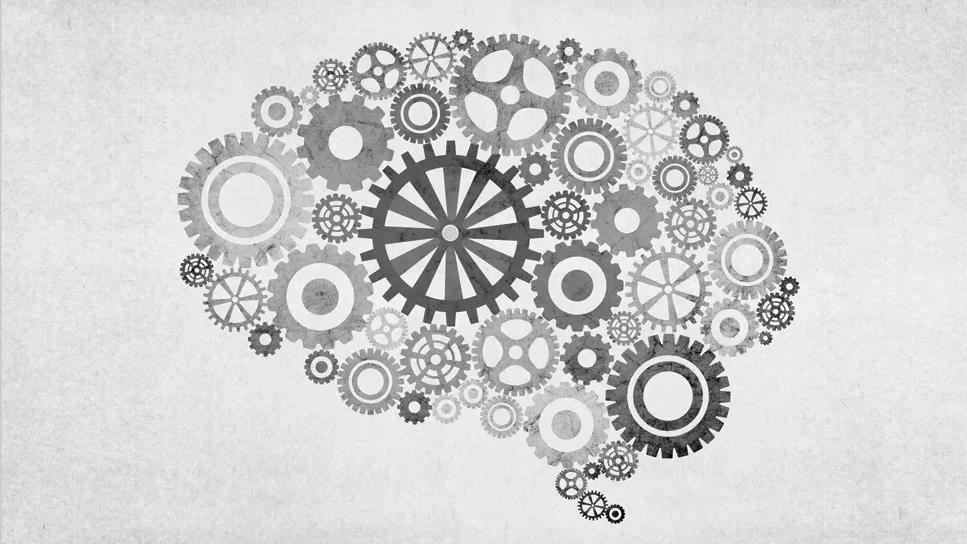Risk of agitation, delusions, personality change and more is shaped by early presentation

The initial predominant indicator of Alzheimer’s or Lewy body dementia — e.g., whether it is memory loss, executive function decline, language deficit or visuospatial dysfunction — is associated with particular later behavioral and psychological changes, finds a new retrospective longitudinal study. Moreover, as dementia progresses, changes such as agitation, apathy, depression, hallucinations and personality change tend to be correlated with the initial cognitive phenotype.
Advertisement
Cleveland Clinic is a non-profit academic medical center. Advertising on our site helps support our mission. We do not endorse non-Cleveland Clinic products or services. Policy
The study, which analyzed more than 2,400 patients with neuropathologically confirmed Alzheimer’s and/or Lewy body dementia, was published by Cleveland Clinic researchers in JAMA Network Open (2022;5[3]:e220729).
“This is the first study to show that the presenting clinical phenotype — along with neuropathology and a patient’s age and sex — predicts the likelihood of subsequently developing specific behavioral and psychological symptoms,” says the study’s lead author, Jagan Pillai, MD, PhD, staff neurologist with Cleveland Clinic Lou Ruvo Center for Brain Health. “Awareness of these associations can help inform patients and their caregivers of the probable course of their disease and help guide management.”
The myriad behavioral and psychological symptoms associated with dementia can impact a patient’s functional limitations, caregiver burden, timing of institutionalization and even mortality risk. Different manifestations of dementia are believed to reflect selective regional vulnerability of neuronal populations and patterns of neurofibrillary tangle accumulation and Lewy body pathology, contributing to clinical dementia phenotypes.
Whether a patient’s initial cognitive presentation is associated with the nature and severity of subsequent behavioral and psychological manifestations of dementia had not been previously determined and was the main focus of the current study.
The study population was taken from the National Alzheimer Coordinating Center database, with records from 37 centers between 2005 and 2019. The analysis included 2,422 patients (59.7% men; mean age, 74.4 years). Patients had neuropathologically confirmed diagnoses of Alzheimer’s disease (n = 1,187), Lewy body dementia (n = 331) or mixed Alzheimer’s disease and Lewy body dementia pathology (n = 904). The mean (± SD) interval from initial visit to autopsy was 5.5 ± 2.8 years.
Advertisement
Initial clinical phenotypes — as determined by the predominant symptom of cognitive decline first recognized by a clinician — were characterized as having primarily amnestic (memory loss), executive (or attention/concentration), language or visuospatial features.
Next, changes in 10 behavioral and psychological symptoms, as determined and noted by the clinician at subsequent patient visits, were identified and compared to the initial phenotype and other patient characteristics and the underlying neuropathology. The 10 symptoms evaluated were agitation, apathy, delusions, depression, disinhibition, auditory hallucinations, visual hallucinations, irritability, personality change and rapid eye movement (REM) sleep behavior change.
Neuropsychiatric Inventory Questionnaire data were used to determine severity scores for behavioral and psychological changes.
Analysis of the data revealed several patterns in the development of behavioral and psychological symptoms of dementia.
A majority of patients in the cohort had the amnestic phenotype (77%). Compared with these patients with initial amnestic symptoms:
Advertisement
In addition, differences were found to be associated with Lewy body disease versus Alzheimer’s disease. Lewy body disease involved:
The following differences were seen in the mixed Alzheimer’s-Lewy body disease group:
The study also identified younger age as a risk factor for developing most behavioral and psychological symptoms, as well as for greater symptom severity. In addition, low educational level and male sex were associated with more severe symptoms among patients with Alzheimer’s disease or mixed Alzheimer’s-Lewy body dementia.
Overall, women were less likely than men to develop agitation, apathy, visual hallucinations, irritability and REM sleep behavior change, but women had a higher risk of depression.
Dr. Pillai emphasizes two key conclusions from the study. “First, initial cognitive presentation is significantly associated with the development of specific behavioral and psychological symptoms of dementia,” he says. He notes that the mechanism for this observation may be explained by regional differences in brain functions. For example, the prefrontal cortex — associated with executive function — is also thought to play a role in reality-based beliefs, which likely explains the elevated risk of delusions and hallucinations in patients who present initially with executive dysfunction.
Advertisement
“Additionally, the spectrum of behavioral and psychological symptoms reflect the underlying neuropathology,” he says, noting that significant differences were found between patients with Alzheimer’s pathology as opposed to Lewy body pathology.
“These findings collectively provide an important window into the heterogeneity of cortical changes in dementia,” Dr. Pillai concludes. “This is useful to clinicians as they plan patient care and counsel caregivers and family of patients with dementia.”
Advertisement
Advertisement

Specialized course helps APPs navigate clinical concerns and interpersonal skills

Comprehensive mental health screening may help prevent postsurgical risks

The reassuring potential of psychedelics for the management of substance use and treatment-resistant mental health disorders

Findings underscore the value of clinical monitoring in pregnant patients using SSRIs and SNRIs

Experts evaluate ketamine therapy with cautious optimism

Expert urges action to mitigate the tragedy of fatal overdose

Experts encourage customized care, concomitant treatment of substance use disorder and heart infection

Compassionate, personalized approach can help providers avoid common treatment pitfalls